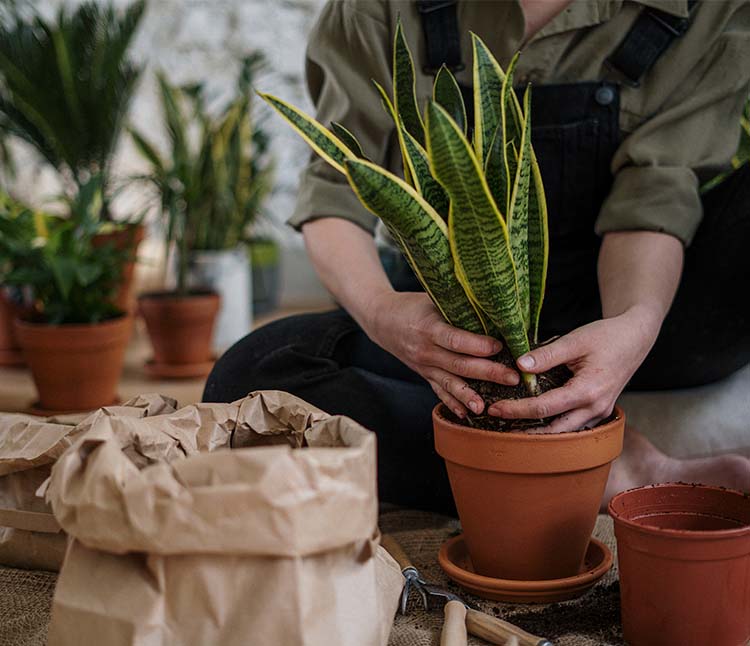Buying plants just because they’re pretty or overwatering them are the most common mistakes made by beginners. We all have to start somewhere, and although taking care of something that doesn’t move or speak might seem like a doddle, you have to know how to do it properly. You don’t need a gardening degree, but like everything else in life, you must be willing to learn and show a bit of interest.
If you’re a first-time plant parent, start with something easy, like a pothos. These hardy plants are perfect for beginners, as they cope well with low light conditions and underwatering. They’re a great choice, as you won’t be biting off more than you can chew. It’s also important you choose plants that are suitable for your climate, since not all plants can thrive everywhere.
Another thing to remember is checking whether your plants are suitable for indoor or outdoor use. As many have specific or strict requirements, it’s important you know what species they are and what care they need. Light is an essential element: we often place plants on the coffee table because they look great, but they don’t necessarily get the light they need. Find out your plants’ sunlight requirements and move them to a suitable spot, for example, south-facing windows will get more hours of sunlight than north-facing ones.
Using the right pots is also key. When you bring home new plants, their roots are often cramped into tiny pots and need more space, so we recommend you repot them in larger ones. But make sure you wait a few days, otherwise your new plants will get stressed! It’s also important that potted plants have holes in the bottom and that you use fertiliser so they can continue being fed with the substrates they need.

Another of the most common problems for plant owners is watering: plants either die from overwatering and drowning, or from underwatering and drought. Here are three tips to avoid this problem:
1.Place a layer of small stones at the bottom of your pots for drainage – this will prevent the bottom of your plants from becoming waterlogged.
2.When watering, soak the soil, and if a little water comes out of the holes at the bottom, even better.
3.Let the soil dry out before watering again. When plants run out of water, they use their roots to look for more, which helps them grow faster.
Sometimes you might have plants in hard-to-reach places, and over time you might forget to water them, and they end up dying.
But now, thanks to the new GreenCity range, you can reach them all: its sprayers are designed to provide solutions to urban needs, where handling and ergonomics are vital for tending to plants on balconies, terraces, vertical gardens, urban gardens, etc.

And last but not least, all plants need a little bit of attention. Every so often, it’s important you walk around the house and take a good look at your plants, how they’re doing, clean them, watch them… You can even talk to them if you like! That way, you’ll notice sooner if something is wrong, and you’ll be able to save them. Ready to give it a go?
For tips on how to decorate your terrace, download our free guide and you’ll see how to organise your space, choose your plants, and learn how to take care of them.
